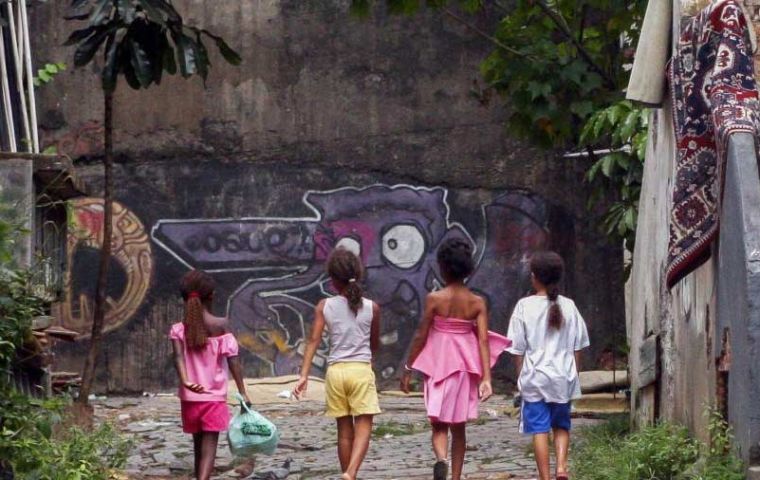MercoPress. South Atlantic News Agency
Brazil's cities have more poor people
 The metropolitan regions with the highest poverty rates were Manaus and São Luís
The metropolitan regions with the highest poverty rates were Manaus and São Luís The number of people below the line of poverty in Brazil's 22 largest cities has reached 19.8 million in 2021, it was reported Monday by the Pontifical Catholic University of Rio Grande do Sul (PUCRS), the Metropolis Observatory, and the Network of Observatories of Social Debt in Latin America (RedODSAL).
The study showed an increase of 3.8 million people last year compared to 2020 which is the highest figure since these measurements started in 2012.
The 19.8 million people living in poverty in large Brazilian cities account for 23.7% of the entire population living in these metropolises, also a record figure.
The reasons for the increase in poverty are believed to lie in the government's decision to cut COVID-19 subsidies in addition to inflation and a stagnant labor market.
According to the report, Brazil had started showing difficulties fighting poverty since 2014, which worsened in 2020 with the pandemic.
“The crisis was already brewing. We were in a very bad situation, and on top of that, the pandemic came,” PUCRS Social Sciences Professor André Salata was quoted by Xinhua as saying.
The bulletin used World Bank criteria to define the parameters of poverty and extreme poverty. In values converted to reais, the poverty line was set at less than R$ 465 (US$ 91) per capita per month, while extreme poverty was for those earning less than R$ 160 (US$ 31) per capita per month.
The total number of people in extreme poverty in Brazil's metropolitan regions reached 5.3 million, tantamount to 6.3% of the population of these metropolises, representing an increase of 1.6 million from 2020.
The metropolitan regions with the highest poverty rates were Manaus (41.8%) and São Luís (40.1%), the only ones to exceed 40%. The lowest poverty rates were recorded in Florianópolis (9.9%) and Porto Alegre (11.4%). (Source: Xinhua)




Top Comments
Disclaimer & comment rulesCommenting for this story is now closed.
If you have a Facebook account, become a fan and comment on our Facebook Page!